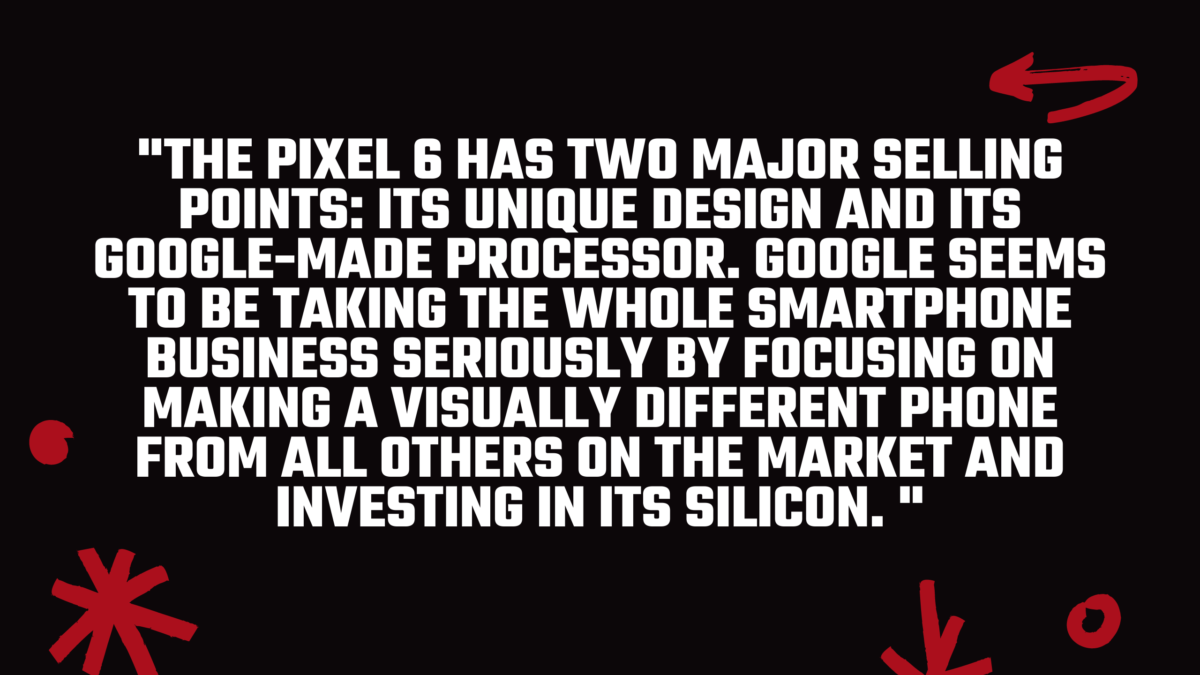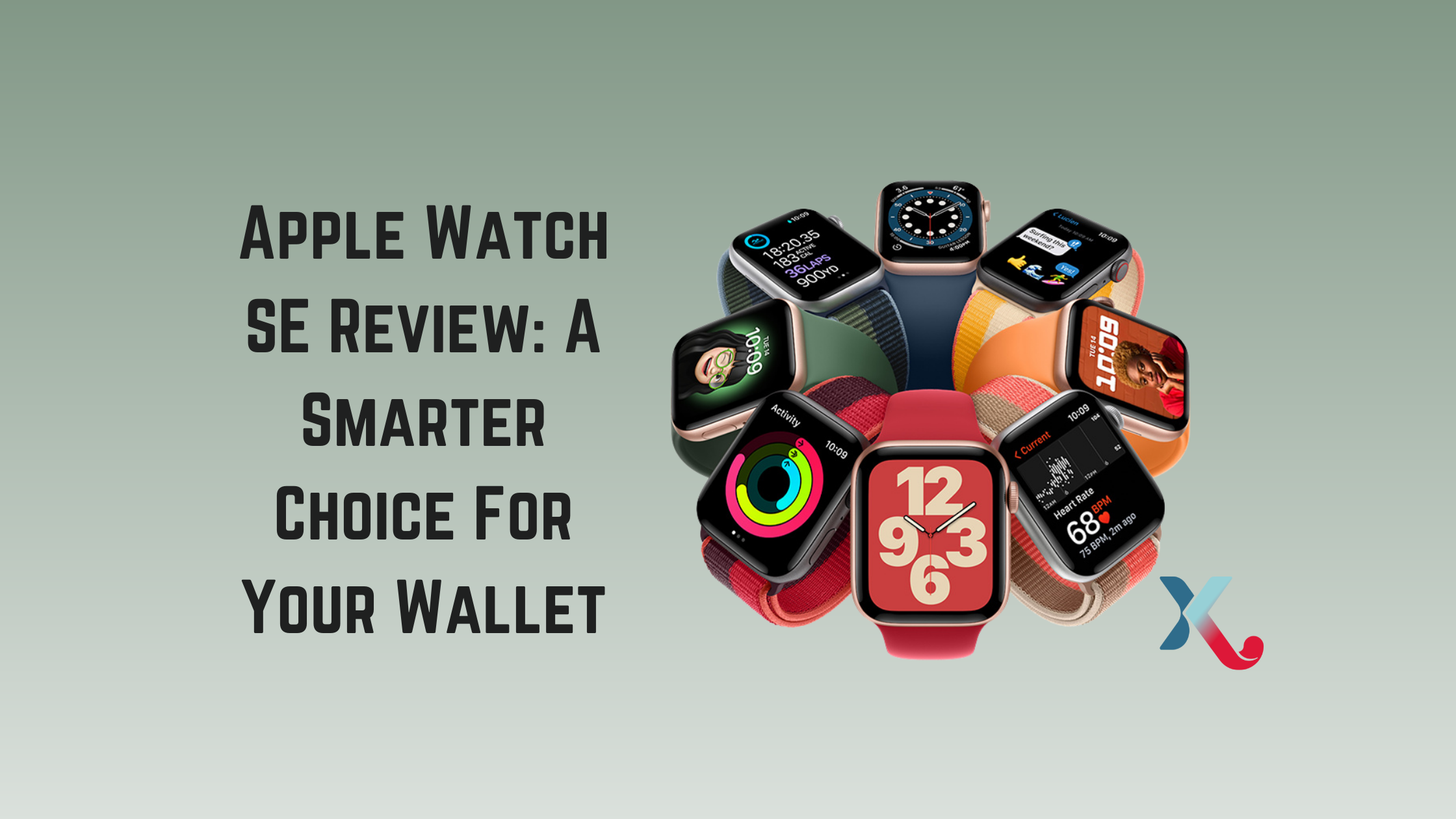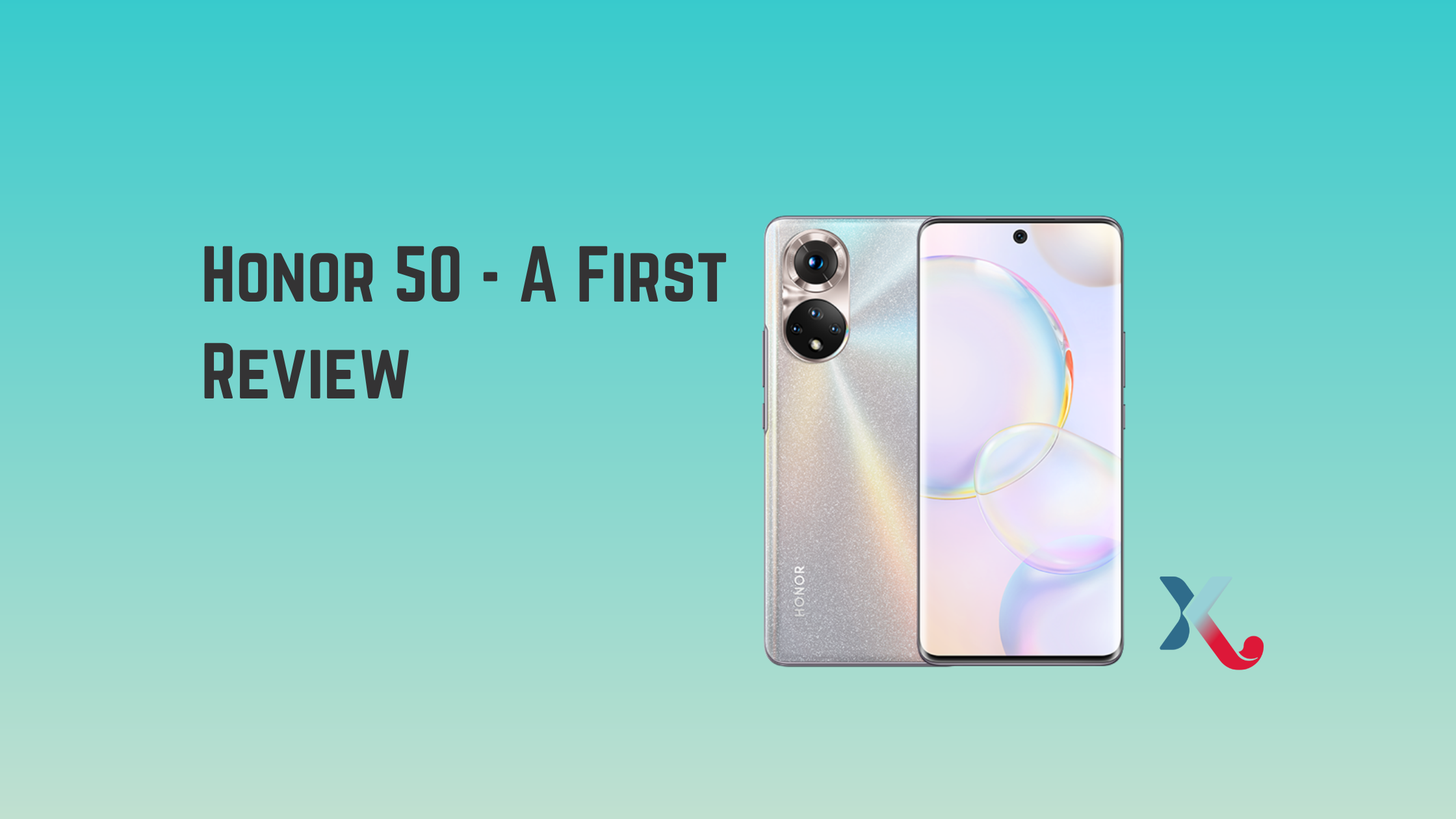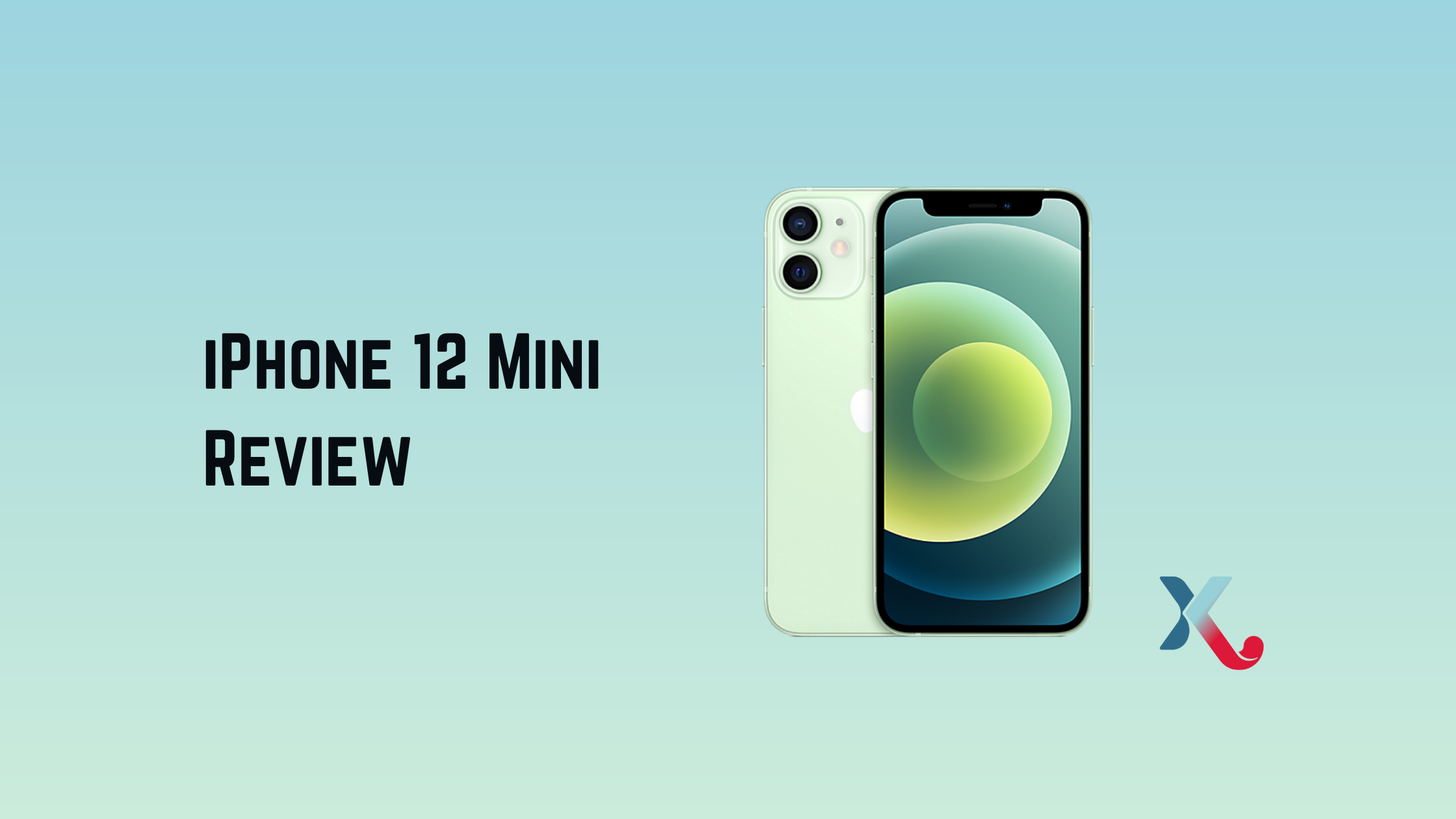The Pixel 6 has two major selling points: its unique design and its Google-made processor. Google seems to be taking the whole smartphone business seriously by focusing on making a visually different phone from all others on the market and investing in its silicon. The Pixel 6 is an excellent example of this.
For
- Unique standout design
- Five years of security/software upgrades
- Water and dust resistance
- It’s not too expensive
Against
- It is pretty large compared to the Pixel 5
- Not all fast-charging is bad
The Pixel 6 is, without doubt, the most secret tech item in recent years. It’s mainly because Google doesn’t want it to be kept secret. Instead of keeping quiet about the leaks, Google confirmed them. In the weeks leading up to the official announcement, Google has been spending a lot of marketing dollars behind the phone.
Google’s message has been very clear: this is the next big thing. An Android phone for people who have their pulse on the pulse and want to be different from everyone else. It’s trendy. It’s unique design and innovative software experience will make it a popular phone.

It’s Like no other
- Finishes: Stormy Black, Sorta Seafoam, Kinda Coral
- Dimensions: 158.6×74.8×8.9mm / Weight : 207g
- IP68 Water and dust resistance
- Corning Gorilla Glass Victus
The Pixel 6 isn’t like any other Android smartphone, regardless of whether you view it from the front or back. It is as unique as a rectangle of glass can be.
The frame and bezel design are a big part of this distinctiveness. The frame is very right-angled and angular, with thin bezels. Google decided to go squarer with the corners rather than a round appearance with an internal curving hub in the bezel. It almost has a Nokia Lumia vibe. That’s a positive thing.
The frame has right-angled corners but is still round to ensure it feels comfortable in your hand. The phone’s back glass has slight curves that enhance this feeling. It’s not as flat or sharp as the iPhone 13. It’s much more round and more significant than the Pixel 5, but it’s still not as ergonomic as its predecessor.
The Pixel 6’s size and weight make it a heavy smartphone. However, Google has added a one-handed mode to Android 12 to help you stretch your fingers. This is similar to Apple’s Reachability feature for iOS. It allows you to drag content further down from the top of your screen so that you can reach it using a thumb.
The most noticeable difference between the Pixel phone and other phones is on the back. It’s different from other phones if you take one look. The corner of the camera unit is not rectangular, square, or pill-shaped. Google instead spreads the camera unit across the phone’s entire width.
An aluminium frame joins the main chassis and caps the protrusion at the top and the bottom. This solves the minor problem with the corner-placed method. This means that the phone won’t wobble if you lay it on its back.
The design and build quality are excellent. It has a solid feel, thanks to Corning Gorilla Glass Victus. The frame also has an IP68 rating for dust and water ingress. The buttons to the right are responsive and clicky. The camera ridge can collect fluff and other minutiae from our pockets, but it does not seem to be clicky and responsive.
It’s pretty basic in layout, aside from that. The volume rocker, wake/sleep, and SIM tray are located on the right edge. A Type-C port is at the bottom. Google has replaced the physical fingerprint sensor with an optical in-display sensor. A centrally located front-facing camera punches through the top of the display, however, is not present.
There are three colour options for the regular Pixel 6. The Stormy Black is our review unit. It features a tri-tone design with dark grey as the dominant colour and a black panel on the back. There’s also a panel for the camera with a darker grey panel, while the panel above it has a light grey panel. This is the best option for those who prefer a subtle look, as it’s the other colours that will catch attention.
Display
- OLED Panel 6.4 inches
- 1080 x 2400 resolution (411ppi)
- 90Hz adaptive refresh rate
- Support for HDR10 and 24-bit color
The display specs list looks almost identical to any other Android flagship phone. The Pixel 6 boasts a Full HD+ resolution OLED screen with a 20:9 aspect ratio and can refresh at up to 90Hz. Although it isn’t quite as high-end as the 120Hz panels, the Pixel 6’s price tag is not unreasonable.
The screen can still move fluidly at speeds of up to 90 frames per second. It is equally adept at handling contrast and colour. It can display 16,000,000 colours with 24-bit color capability. This allows for wide gamuts of colour and enough brightness to make HDR10 content look great.
It is an enjoyable experience to watch movies on Netflix, Disney+, and Amazon Prime. The image processing and display quality are key factors. Dynamic range is excellent, with bright spots in HDR-capable titles shining piercingly bright without losing texture or detail in the darker regions.
While the darkest parts of the film are darker and more eerie, colours have a bright and appealing tone. The panel can show the movie colors in the most natural way possible, whether you are watching After Life on Netflix or something more colorful and hyperrealistic like Free Guy on Disney+.
However, it’s not perfect. It is a bit nitpicky in that the colours shift slightly when viewed from different angles. If you look at a white screen, adjust the angle to notice slight green or pink tinting. However, it’s not often an issue.
Android 12’s unique charm
Google spoke at its Android 12 announcement event and praised that its 2021 operating system was built to reflect your personal tastes. Google’s Pixel 6 marketing campaign has been about being different, being cool, and being yourself. Android 12 is the best platform to express your feelings.
Android 12 is a step up from Android 11. It’s always been customisable, but Android 12 brings a new level of customisation to the platform. The Pixel has a more flexible and customisable design.
One of the major changes made to the system is the way it works. It’s not a matter of changing accents on some menus. Instead, it changes your entire colour scheme. This applies to the Google keyboard, all Google apps (like Gmail,
Messages and Phone) and any other applications that aren’t third-party.
You can select the colours you want, but the screen automatically highlights the most prominent ones from your wallpaper. All the layers and Google apps are affected by the wallpaper you have changed. It’s quite impressive.
It’s only problem is the theme icons, which are currently in beta. It changes the colour theme of your app icons, but only for Google’s apps. This doesn’t work for third-party icons, so you won’t see any themed icons. This doesn’t look very good.
Widgets are also a mainstay of the show. You can also add widgets to Google’s apps and system functions such as Weather, Photos, and Clock. For example, the clock widget can be either a round or scalloped widget. It’s a great chance for apps with this additional functionality. It’s something we hope third parties will adopt. The juxtaposition of styles can be jarring if you are using widgets that date back to third parties.
Android 12 has more functionality than ever, especially in privacy and security. Privacy Dashboard allows you to look at your permissions and see what apps have access to your location, camera, microphone and other information. You can easily deactivate access to any apps that are acting suspiciously. You can also disable camera and mic access completely by using the large switches located in the quick settings shade.
Other advanced features can run in the background. The adaptive battery, which learns your usage patterns to save power and keep your most-used apps running in the background, is one example. The adaptive network connection skills optimise your use of Wi-Fi and Cellular to prolong the battery’s life.
Live Translate is a powerful tool that allows you to communicate with people speaking a different language than you.
Qi wireless charging
While the design of the Pixel 6 is the main focus of Google’s smartphone, there’s another important point: the processor. Google is following a similar path to Apple, dropping third-party silicon in favour of its own processor. It’s called Tensor.
Google claims that the Pixel 6 will perform 80 percent better than the Pixel 5. However, the older phone was powered by the Snapdragon 765G, which wasn’t the most powerful available at the time. It would have scored lower if Tensor was compared to the Snapdragon 888, but Google’s platform isn’t designed to be an extremely powerful chip that can drive excessive graphics and speed.
Tensor’s neural engine is the heart of its machine learning components. It uses a brain-like approach to its computations. This approach powers everything, from the algorithms that determine all advanced camera features, image processing and language processing to every other aspect.
The Pixel 6’s everyday performance is nothing to be concerned about. It is responsive, fast and capable of handling any game.
The battery inside is comparable in size to the ones found in flagship Android phones. With a capacity of 4614mAh, it’s enough to last you through a whole workday. Even with heavy usage, it was difficult to drain the battery completely even when we were using it heavily. We would find that we still had more than 40% of our screen time on lighter days with only three hours of screen use.
Although the 30W charging speed isn’t instant, it’s enough to keep you from waiting around for your phone to charge up when it’s empty. This is only true if the charger you receive has a 30W Power Delivery capability. You can also charge your Pixel wirelessly by purchasing the new Pixel Stand.
The camera capabilities are a major difference between the entry Pixel 6 model and the Pro model. The regular Pixel has a dual-camera system that includes a primary wide lens as well as an ultrawide lens. However, there is no mega-zoom like the Pro. Google’s Pixel 6’s main sensor, a 50-megapixel one, packs enough pixels to enable a “Super Res Zoom” feature, which allows you to use a digital zoom up to 7x.
Where To Buy? At NIX Of Course!
Trade-in your old phones with NIX and leave with a brand new phone.
Remember, the NIX magic number is zero!! How close can you get? Come in and see.
Recycle your old phone with NIX and sign-up to our Premium Membership for even better prices and saving at NIX.
MEGA TIP: NIX Premium Members can trade in multiple devices at once to really reduce the price of the new phone.


